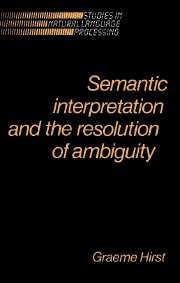Summary
Like all other scientists, linguists wish they were physicists. They dream of performing classic feats like dropping grapefruits off the Leaning Tower of Pisa, of stunning the world with pithy truths like F = ma … [But instead,] the modern linguist spends his or her time starring or unstarring terse unlikely sentences like “John, Bill, and Tom killed each other”, which seethe with repressed frustration and are difficult to work into a conversation.
–Joseph D BeckerWhen I took my first linguistics course, freshman transformational syntax, in 1974, we were taught that syntax was now basically under control. Sure, people still argued over particular transformations, and this was still all new and exciting stuff, but there was general agreement on the approach. Semantics, on the other hand, was a difficult and tenuous territory; no one yet understood what a semantic was. Semantics was said to have the same qualities as God or Mind—fun to argue about, but inherently unknowable. The study of semantics was left, therefore, until junior year.
Given linguists with attitudes like those toward semantics, it is not surprising that consumers of linguistic theory, such as researchers in natural language understanding, took semantic matters into their own hands. The result was approaches to semantics that were exemplary in their own terms but lacked a firm theoretical basis and hence were inadequate in their relationship to other aspects of language and to wider issues of meaning and representation of meaning. The best example of this is the dissertation of Woods (1967), which I will discuss in some detail in section 2.3.1.
Information
- Type
- Chapter
- Information
- Publisher: Cambridge University PressPrint publication year: 1987
